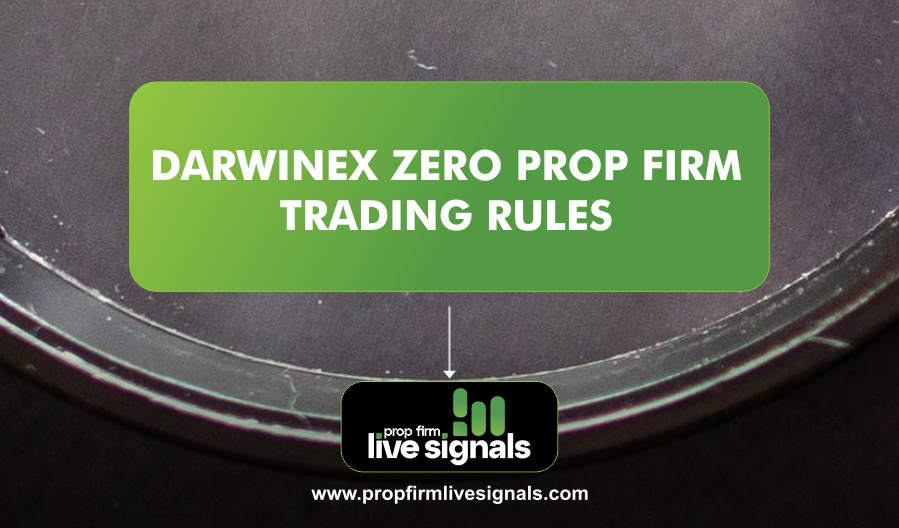The challenges set up by prop firms serve as a strict examination of a trader’s skills, and the main focus is not just on profitability but also on the effective use of risk management strategy.
This article enumerates some of the techniques that could be used to enhance one’s risk management strategies in prop firm challenges.
Understanding Prop Firm Challenges
Prop firm challenges are organized tests developed to test the capability of a trader in accomplishing profits while maintaining compliance with strict risk management rules.
Most of the time, these challenges require achieving some targets for profit with defined parameters, including the maximum limits of drawdowns and daily losses. The main purpose is to identify traders who consistently do well under stress but protect the firm’s capital.
Importance of Risk Management
Effective risk management is considered the cornerstone for successful trading. It involves the identification, assessment, and prioritization of risk, further developing a coordinated effort in minimizing, monitoring, and controlling the probability or impact of adverse events. In the context of prop firm challenges, robust risk management techniques can significantly heighten the chances of passing the evaluation for funding.
Key Risk Management Techniques
1. Position Sizing
Position sizing plays a crucial role in risk management. Traders determine the size of lots for each trade by evaluating their account size and risk tolerance.
A common rule of thumb states that a trader should risk no more than 1-2% of his total account balance on a single trade. This approach ensures that consecutive losses do not dramatically decrease his account, preserving his ability to continue the fight.
2. Stop-Loss Orders
The second important approach to limiting risk involves stop-loss orders. A stop-loss order is placed at a designated price level and automatically closes a trade if it moves against the position of the trader beyond an acceptable limit. This stops large losses and preserves capital by enforcing discipline in exiting losing trades.
3. Loss Limits
Setting daily loss limits helps one to retain control over trading activities. A daily loss limit is the amount a trader will be satisfied with having lost in a single day of trading.
Once that limit has been reached, for that day, all trading should be stopped to avoid making emotional decisions that may lead to further losses. This technique helps to preserve one’s capital and reinforces disciplined trading behavior.
4. Risk-Reward Ratios
Setting up risk-reward ratios for every trade can make the decision-making process even better. A risk-reward ratio is comparable with respect to the potential profit of a trade against its potential loss and guides traders to select favorable trades.
A common practice is seeking at least a minimum risk-reward ratio of 1:2, meaning that for every dollar risked, two dollars are expected in return.
5. Diversification
Diversification involves spreading investments across various assets or markets to reduce exposure to any single asset’s risk. By diversifying trades, traders can mitigate potential losses from adverse movements in one particular market or asset class, thereby enhancing overall portfolio stability.
6. Emotional Discipline
Maintaining emotional discipline is paramount in managing risk effectively in prop firm challenges. Traders should actively devise mechanisms to manage their emotions, particularly fear and greed, which often lead to impulsive decisions that deviate from established trading plans.
They can build emotional resilience by practicing mindfulness meditation or scheduling regular reflections on their trading performance.
7. Regular Performance Review
Periodic performance reviews enable traders to engage in critical self-appraisal and evaluate their trading strategies and risk management.
By analyzing past trades, identifying regular patterns of success or failure, and modifying strategies appropriately, traders can improve their approach with experience. This iterative process promotes a culture of continuous improvement and flexibility.
8. Scenario Analysis
Scenario analysis involves simulating various market conditions and their potential impacts on trading performance. By preparing for different scenarios such as market crashes or unexpected news events traders can develop contingency plans and exit strategies that ensure readiness for unforeseen circumstances during the challenge.
9. Use of Technology
Traders can substantially enhance their risk management capabilities by leveraging technology. They can use trading platforms with features like risk calculators, automated stop-loss orders, and performance tracking tools to manage risks more effectively. These tools collectively help improve decision-making and simplify trading operations.
10. Adherence to Firm Rules
To succeed in challenges, strict adherence to specific rules set forth by the prop firms is paramount. Each firm has its own set of rules regarding drawdown limits, profit targets, and which trading instruments are allowed.
Familiarity with the rules means that traders will stay within acceptable bounds while also maximizing their chances of passing the evaluation.
Want to take your trading to the next level?
Take advantage of our LiveSignals, your go to resource for dependable, real-time trading signals, you can eliminate uncertainty from trading.
Propfirmlivesignals is the answer to your constant success in the markets! You will always be on top of your game with expert analysis and real-time updates. Never let this chance slip away to supercharge your trading journey.
More Info Click here
Frequently Asked Questions (FAQs)
What is position sizing, and how does it work?
- Traders use position sizing to determine the size of each trade based on their overall account size and risk tolerance. They typically ensure they risk no more than a small percentage, usually 1-2%, of their entire account balance on a single trade. This approach minimizes the impact of losing trades on their account.
How do stop-loss orders work in trading?
- Traders place stop-loss orders with a broker, instructing the broker to automatically close a trade when the security’s price reaches a certain level to prevent further losses. Using stop-loss orders, traders can get out of unprofitable trades and avoid significant erosion of their capital.
What are daily loss limits, and why should they be set?
- Daily loss limits are the predetermined maximum losses allowed for a single day of trading. Clearly defining this helps avoid emotional decisions at times of drawdowns and helps the trader to maintain good discipline while trading.
What is the ideal risk-to-reward ratio in trading?
- The ideal risk-reward ratio differs with each trader, but most professional traders look to have ratios of at least 2:1 or 3:1. That is, if risking one dollar, there should be the potential to make at least two or three dollars. A good risk/reward ratio ensures that the profitable trades will outweigh the losing one’s over time.
How can diversification reduce risk in trading?
- Diversification means dispersing one’s capital among different assets or trading strategies. This way, the trader reduces dependence on any single market movement. Through this, position diversification will reduce the overall risk profile of a trader and stabilize his returns.
What is the importance of emotional control to the trader’s success?
- Emotional control is crucial to ensure discipline in trading. A trader needs to overcome all emotions like fear and greed to stick with one’s trading plan or to follow any particular risk management strategy in the worst market conditions.
How should traders make a complete trading plan?
- A comprehensive trading plan should have objectives, criteria for trade entry and exit, rules on risk management-position sizing and stop-loss levels and methods for continual performance measurement. It is also necessary to review it regularly and make adjustments in response to the metrics of its performance.
Can backtesting improve my chances of passing a prop firm challenge?
- Backtesting enables traders to gauge how their strategies would have performed under historical market conditions. These procedures will help identify weaknesses and strengths in your trading strategy, which can provide valuable feedback as you look to make changes before taking a prop firm challenge.
What if I go on a losing streak throughout the challenge?
- If a series of losses occurs during the challenge, it is important to reassess your trading strategy and risk management practices. Consider reviewing your trades for any patterns or mistakes, adjusting your position sizes or stop-loss levels, and taking breaks if necessary to regain emotional control.
Are there any tools or software that can assist with risk management?
- Yes, there are various tools and software that might help in managing the risks while trading. This includes position sizing calculators, a trade journal for keeping track of performance, and automated trading platforms that provide considerable execution of stop-loss orders.
How do I stay disciplined during the prop firm challenge?
- It means committing to a trading plan and following rules concerning risk management and trade execution. Clearly defining goals, frequently reviewing performance, and maintaining emotional control will solidify disciplined behavior throughout the challenge.
Do well to use the comment section to tell us your favourite risk management techniques for prop challenge pass. If you also have a question do well to drop it on the comment section.




